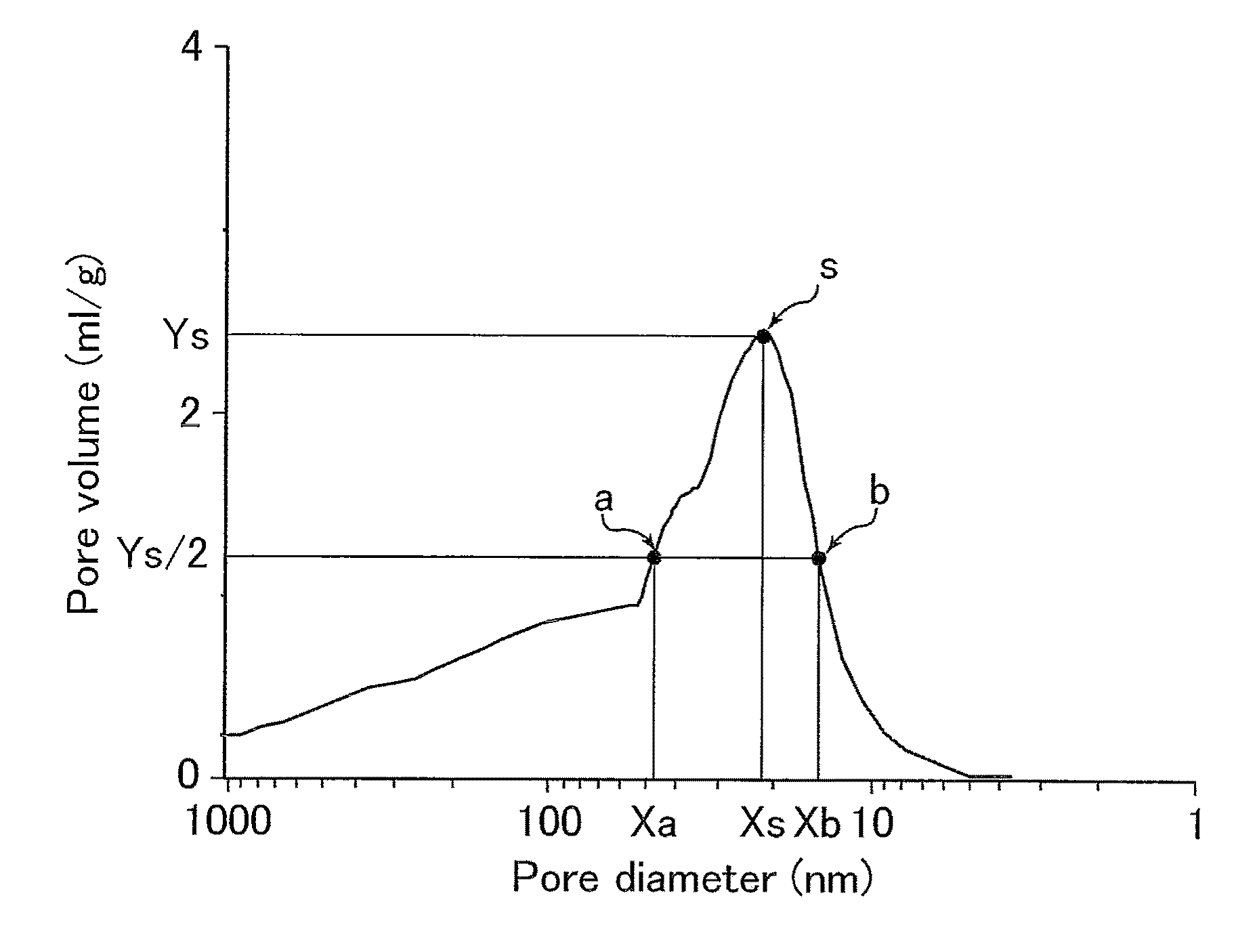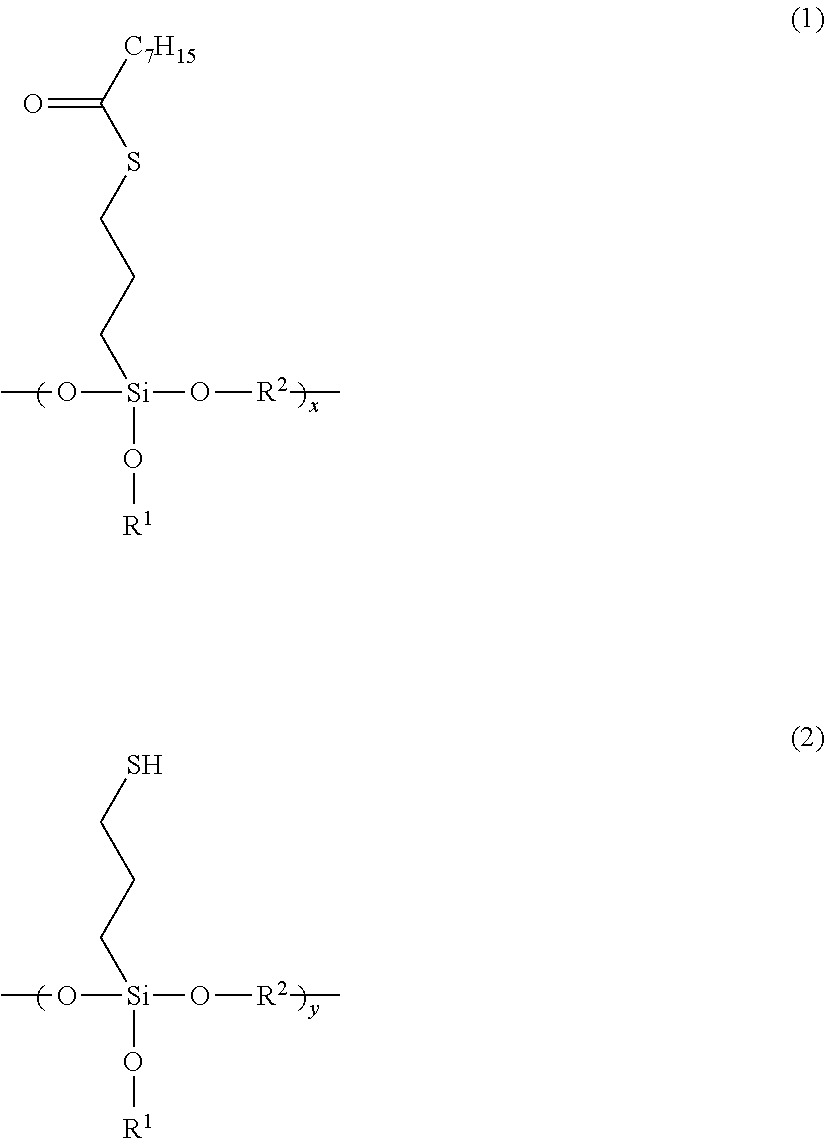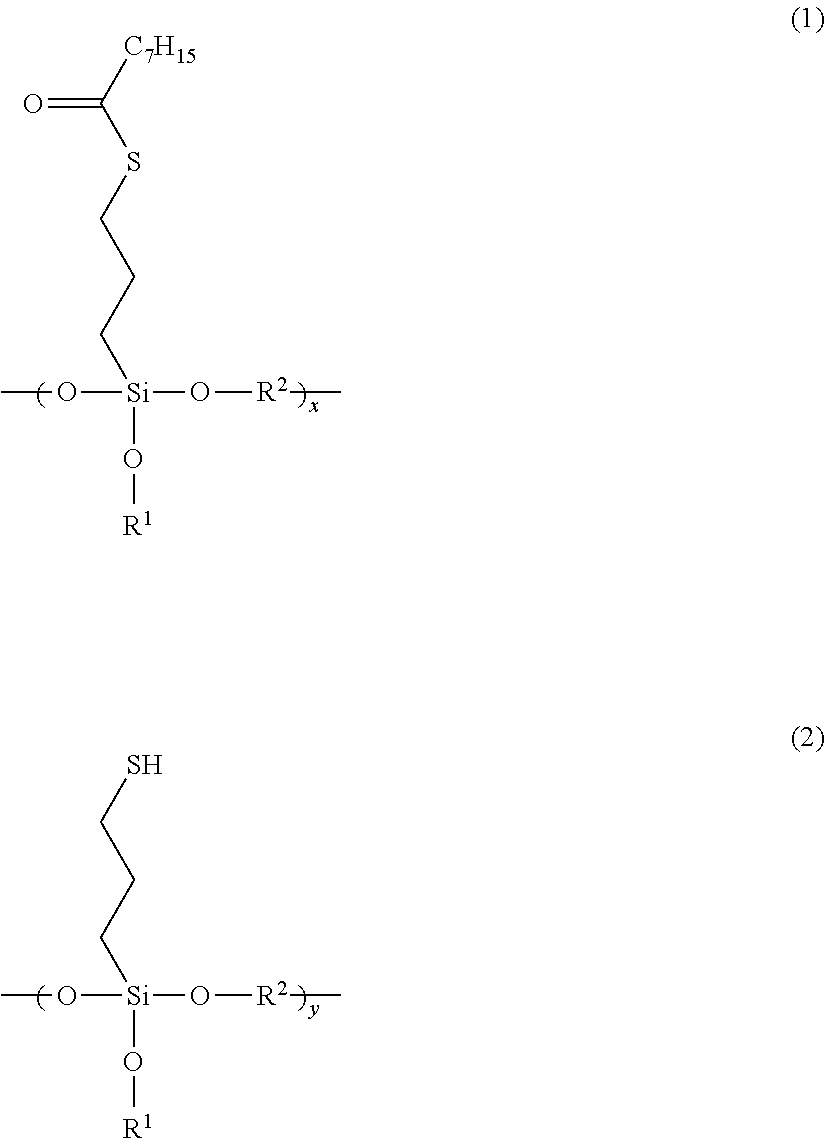Tire rubber composition and pneumatic tire
a technology of tire rubber and composition, which is applied in the direction of dyeing process, transportation and packaging, organic chemistry, etc., can solve the problems of low dispersibility, low crack resistance and flex crack growth resistance, and often inferior to carbon black in abrasion resistance and mechanical strength, so as to improve rolling resistance, tear strength, and improve mechanical strength. , the effect of improving crack resistan
- Summary
- Abstract
- Description
- Claims
- Application Information
AI Technical Summary
Benefits of technology
Problems solved by technology
Method used
Image
Examples
examples
[0116]The present invention is more specifically described based on examples, and the present invention is not limited to these examples.
[0117]In the following, the respective chemical agents used in Examples and Comparative Examples are listed.
[0118]SBR: NIPOL NS116 produced by Zeon Corporation (solution-polymerized SBR terminally modified with N-methylpyrrolidone, styrene content: 21% by mass, Tg: −25° C.)
[0119]BR: BR150B produced by Ube Industries, Ltd. (cis content: 97% by mass, ML1+4 (100° C.): 40, viscosity of 5% solution in toluene at 25° C.: 48 cps, Mw / Mn: 3.3, Tg: −104° C.)
[0120]NR: RSS#3 (Tg: −60° C.)
[0121]Silica 1: Zeosil 1115 MP produced by Rhodia (CTAB specific surface area: 105 m2 / g, BET specific surface area: 115 m2 / g, average primary particle size: 25 nm, aggregate size: 92 nm, pore distribution width W: 0.63, diameter Xs that gives pore volume peak in pore distribution curve: 60.3 nm)
[0122]Silica 2: Zeosil HRS 1200 MP produced by Rhodia (CTAB specific surface area: ...
PUM
| Property | Measurement | Unit |
|---|---|---|
| BET specific surface area | aaaaa | aaaaa |
| BET specific surface area | aaaaa | aaaaa |
| aggregate size | aaaaa | aaaaa |
Abstract
Description
Claims
Application Information
 Login to View More
Login to View More - R&D
- Intellectual Property
- Life Sciences
- Materials
- Tech Scout
- Unparalleled Data Quality
- Higher Quality Content
- 60% Fewer Hallucinations
Browse by: Latest US Patents, China's latest patents, Technical Efficacy Thesaurus, Application Domain, Technology Topic, Popular Technical Reports.
© 2025 PatSnap. All rights reserved.Legal|Privacy policy|Modern Slavery Act Transparency Statement|Sitemap|About US| Contact US: help@patsnap.com



